How to die on Mars
What will we wear, and where will we go?
How will we die on Mars?
Science fiction media has approached this question for decades. For those who die aboard spacecraft on the journey to Mars or some other cosmic destination (e.g., Spock's death in "Star Trek II: The Wrath of Khan" and events in the recent film "Ad Astra"), the solution is always the same: toss 'em out of the airlock.
But what about burial? Burying people once we get to Mars seems like a decent option. But, if bodies were left out on the surface or buried on Mars, it's likely that they would only mummify over time, as the planet hosts no known bacteria that would decompose the body, and face the effects of radiation.
So, instead of throwing beloved crewmates out to freeze, float and eventually break apart in the vacuum of space or leaving friends out on Mars to mummify and get irradiated, it seems that, in real life, we might take more careful measures to mourn and dispose of our dead when off Earth.
Related: See photos of dead Mars probes
Death in space: a brief history
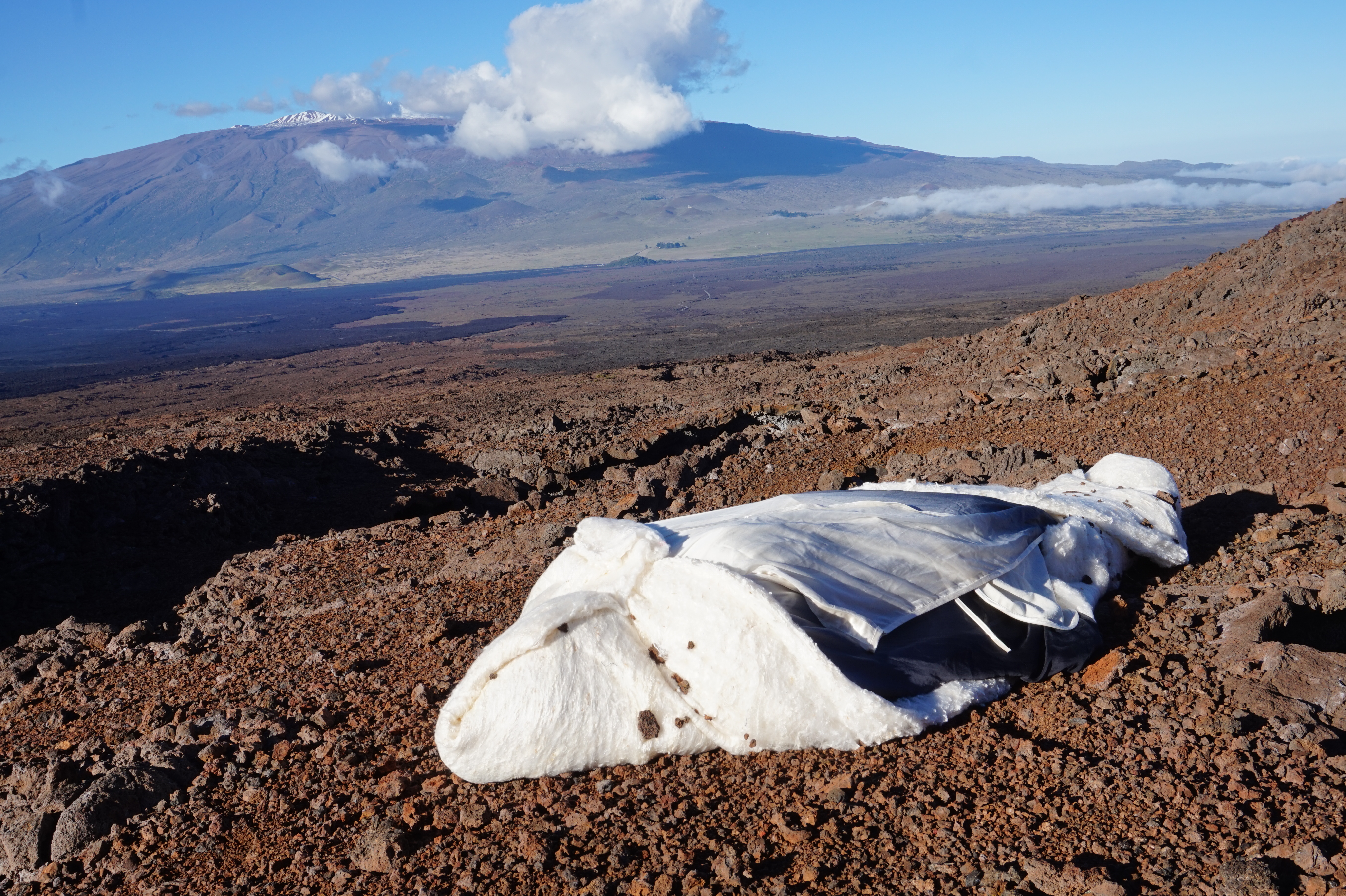
To date, three people have died in space. Following the Soviet Union's launch of the Salyut 1, the first space station, in 1971, the Soyuz 10 mission launched and returned back to Earth early following a problem in docking with the station. That crew made it back to Earth, but the next mission, Soyuz 11, faced trouble after it launched with cosmonauts Georgi Dobrovolski, Vladislav Volkov and Viktor Patsayev. While this crew made it to the station, too, during their descent to Earth (which was also early, due to problems), a valve opened too soon and the crew died from decompression when exposed to the vacuum of space.
With the ship already on a return mission to Earth with no surviving crewmembers onboard, there were no people to follow any procedures following the tragic deaths.
Currently, space agencies like NASA have procedures for surviving crew members to follow if someone dies in space. In his book "An Astronaut's Guide to Life on Earth" (Little, Brown and Co., 2013), retired Canadian Space Agency astronaut Chris Hadfield explained that astronauts conduct what are called "death sims." In these simulations, astronauts act as if a specific crewmember has died and work out what they should do.
Get the Space.com Newsletter
Breaking space news, the latest updates on rocket launches, skywatching events and more!
They work through questions like "What are we going to do with his corpse? There are no body bags on station, so should we shove it in a spacesuit and stick it in a locker? But what about the smell? Should we send it back to Earth on a resupply ship and let it burn up with the rest of the garbage on reentry? Jettison it during a spacewalk and let it float away into space?" Hadfield wrote in the book.
But as it becomes more likely that humans will spend more time on off-Earth locations like the moon and Mars, it's important that we continue to heavily consider and develop plans for what should happen if and when someone dies.
What to wear to die on Mars
Now, just as we likely wouldn't zip our loved ones into a bag and just toss them out of an airlock if they were to die on a spacecraft, we'll likely have respectful approaches on other planets. Once on the surface of Mars, humans will likely have rituals and protocols surrounding death like those we have on Earth.
J.J. Hastings, a bioengineer and CEO of Analogs LLC who served as commander of Sensoria I (the first analog Mars mission as part of the Sensoria program), is exploring what it would be like to die on Mars alongside fashion design researcher Pia Interlandi. The project is made up of two main parts: a ritual death garment and a "human recycler" (my nickname for it, not the actual name of the process or technology).
Now, before we get to the "human recycler" aspect of the project, let's discuss the garment.
Related: The Search for Life on Mars: A Photo Timeline
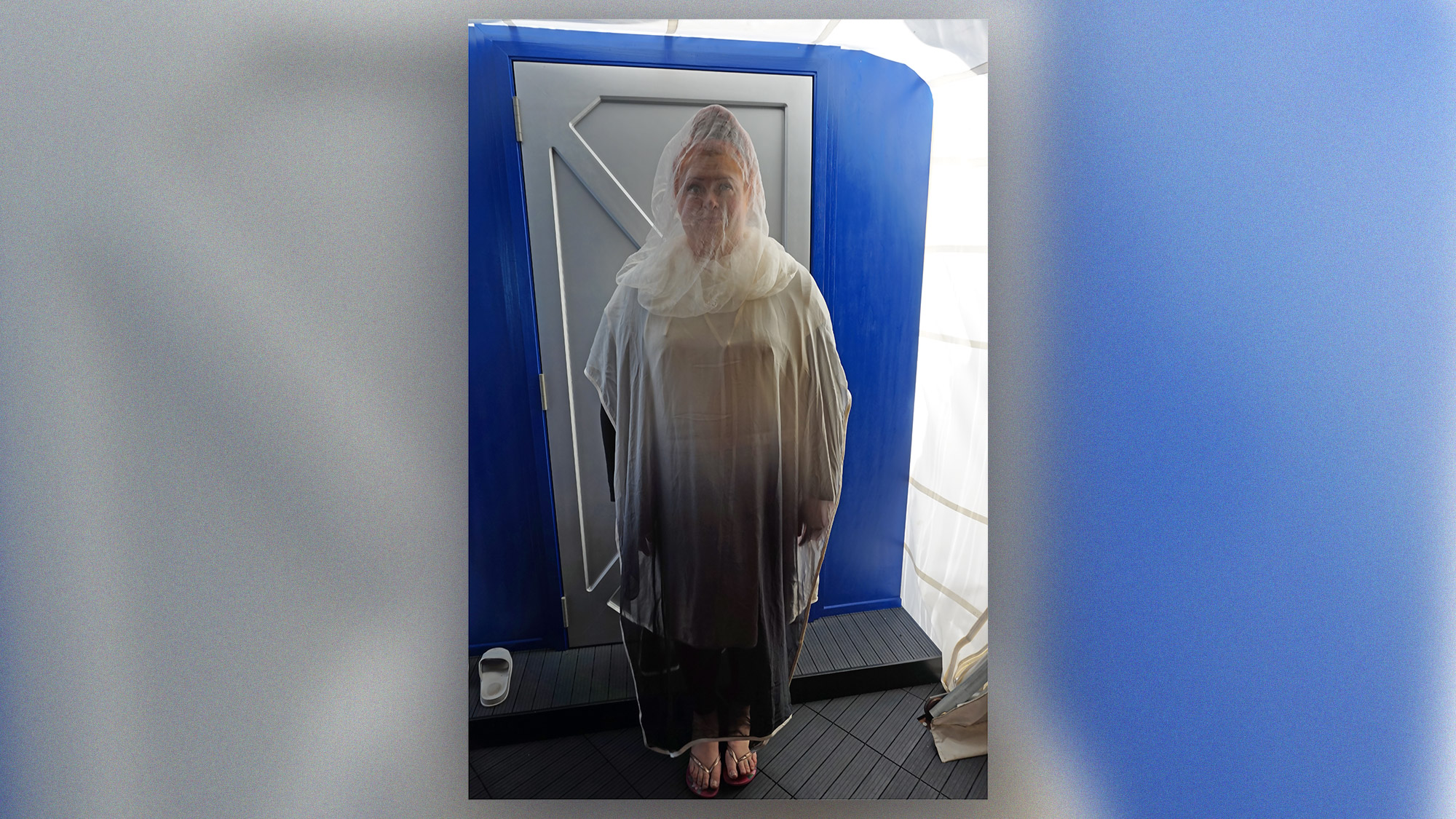
This project aims to conceptualize the process of death and grieving on Mars in a way that aligns with our human sensibilities, both Hastings and Interlandi explained to Space.com. Here on Earth, we have funerals, memorials, wakes, cremation, burial services and more. We have a litany of rituals surrounding death that give us an opportunity to say goodbye to our dead.
To create such a ritual for Mars, Hastings worked with Interlandi, who, along with her research, creates custom death garments on Earth for her work with "Garments for the Grave" and has exhibited her work all around the world at renowned institutions including the Museum of Modern Art. For this "Martian death project," Interlandi created a ritual death garment, which Hastings showed to Space.com at the HI-SEAS habitat during the Sensoria I mission. Throughout the mission, Hastings slept on a pillowcase with "Upon my death, here is everything you need" written on it. Inside the pillowcase were all of the pieces of the death garment.
Sleeping on the clothes they would wear after they die, the concept goes, would not only remind astronauts of their mortality, but also allow them to reflect in a unique way. The pillowcase would also provide a space-saving method for transporting the garment. It "needs to be transportable. It can't be interrupting things. It needs to be something that fits within your packing," Interlandi told Space.com.
Photos: Ancient Mars Lake Could Have Supported Life
The garment has four layers and is 100% biodegradable, so the body can decompose more easily without creating additional, synthetic waste. Interlandi's pieces are designed to be easy to put on a stiff corpse, she told Space.com. She further explained that the Martian garment, specifically, consists entirely of different types of silk (different weights and textures).
The project used silk because not only does it looks and feels nice, is lightweight, and is made out of protein from silkworms. That means that when the death ritual reaches the "human recycler" stage, the garment's proteins could be processed along with those from the human body. (Wool would also work for this reason, but silk was a better choice because of its feel, textures and weight, Interlandi explained).
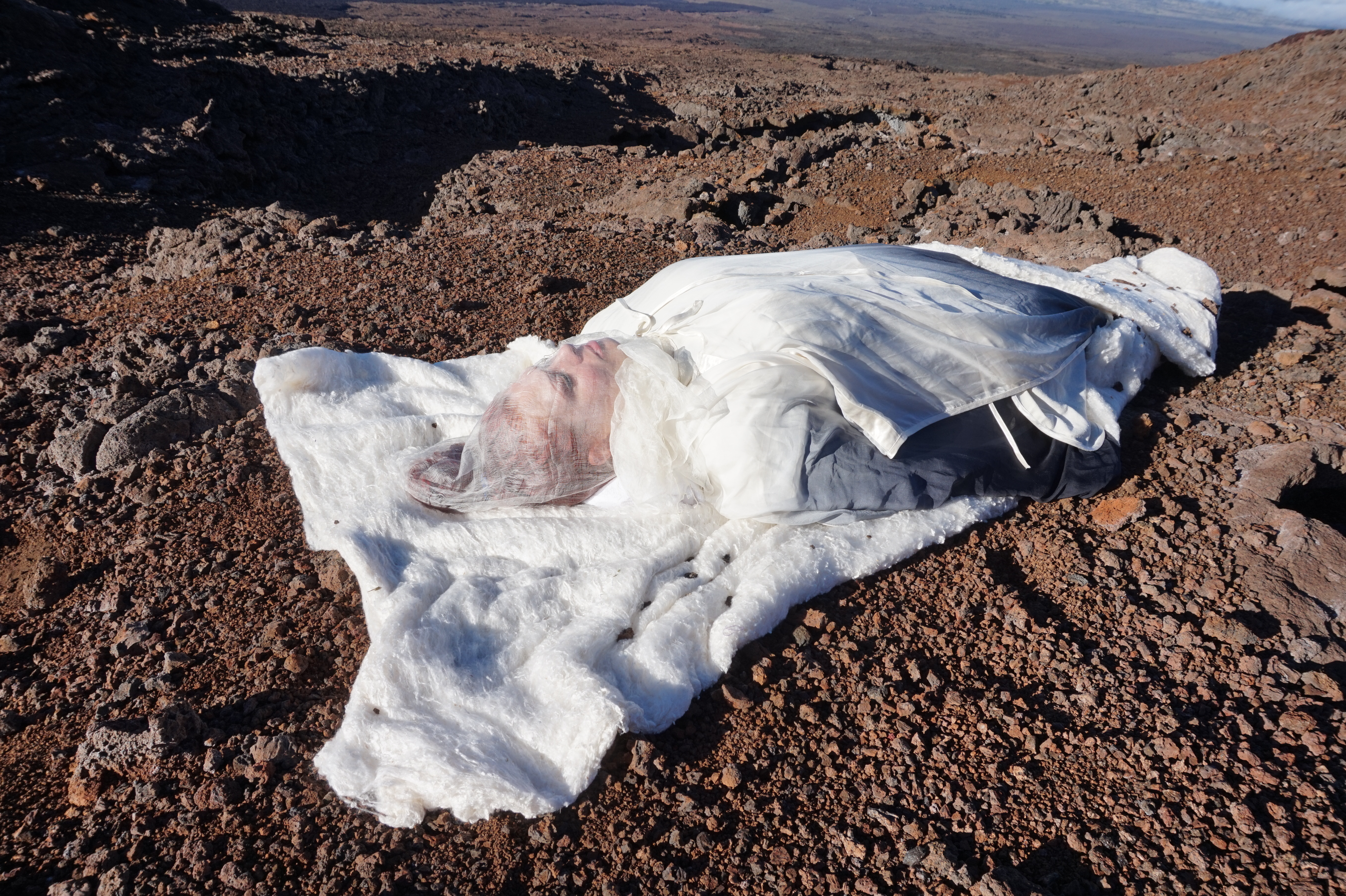
The first layer of the garment is an undergarment, which lies directly against the body. It is a white tunic with ties on its sides.
Over this base layer is the second layer, which "is meant to be more decorative, and this would be if I was lying in the room so if there was a memorial or something else," Hastings told Space.com while wearing the flowing garment. This semi-translucent layer is made out of a light silk and features a gradual color fade from from the top to the bottom of the garment, white to dark gray.
Third, the garment features a light silk, gauzy piece that wraps around and covers the face.
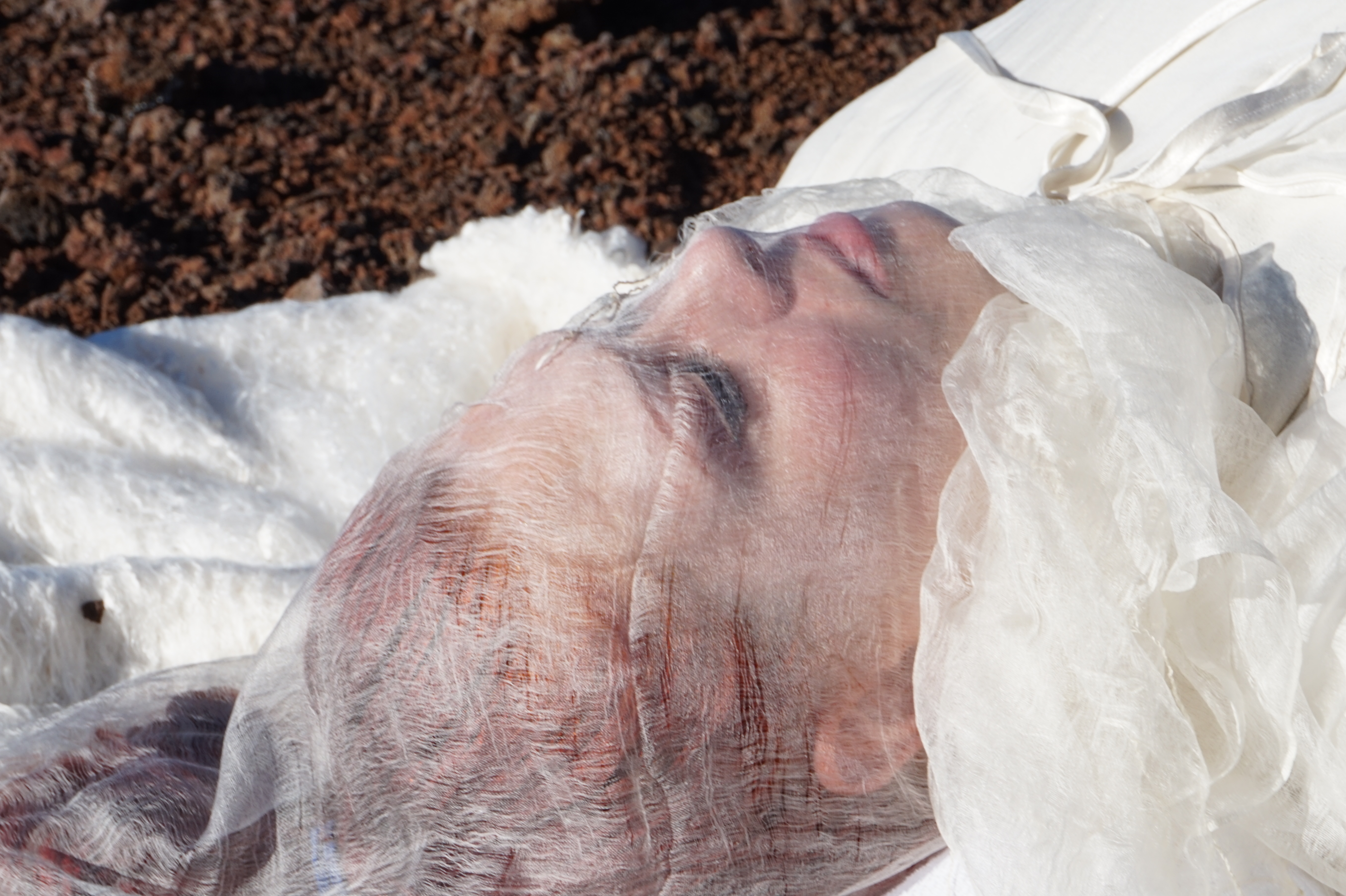
Finally, the garment includes a large, blanket-like veil made out of a very simple silk that feels and looks almost like a large, thick web. This fourth piece wraps around the body over the other garments.
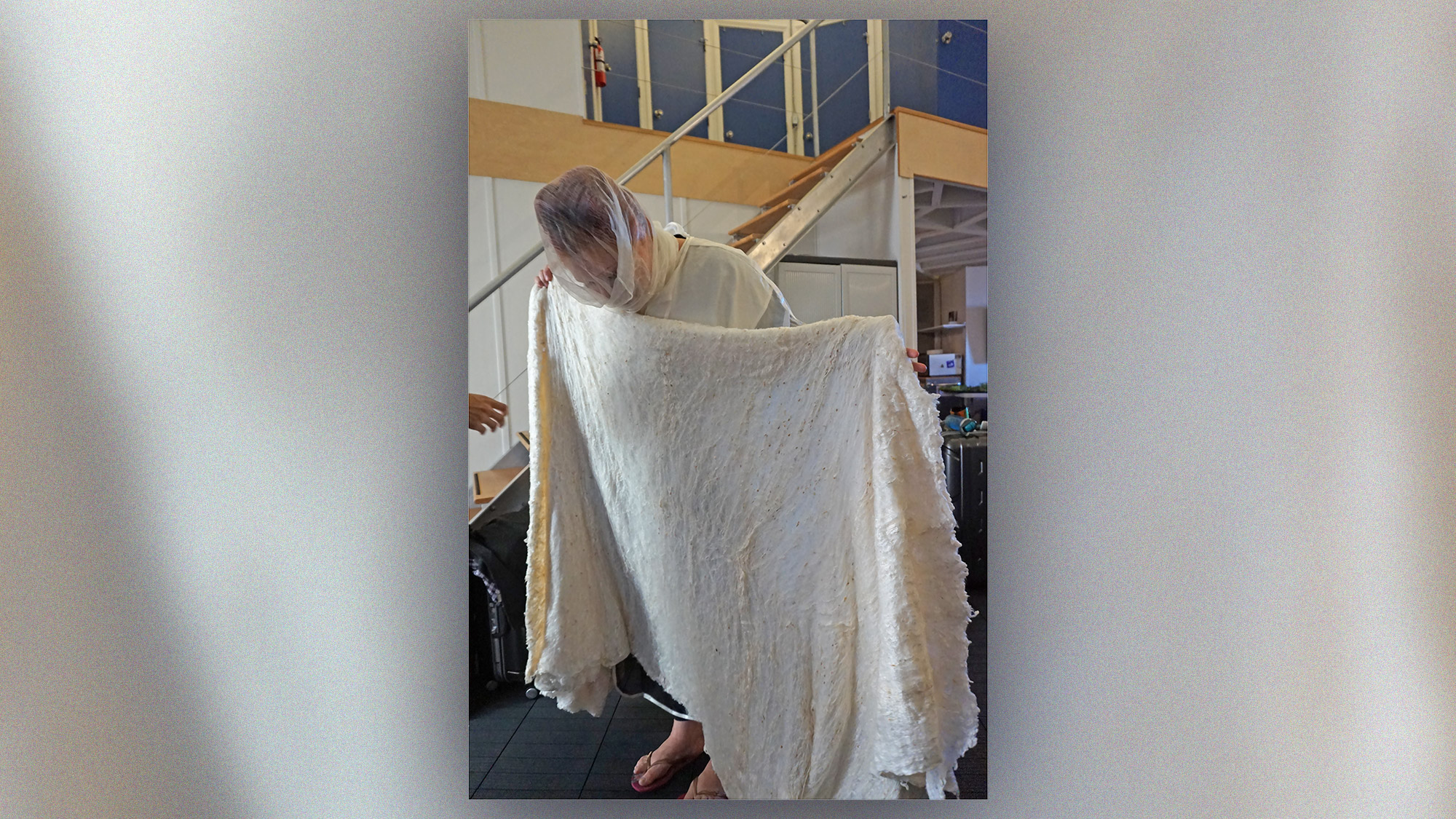
The pieces serve the practical purpose of covering the dead in biodegradable fabrics that are easy to put onto a stiff, dead body. But the act of dressing the dead in the different layers also creates a ritual that allows grieving parties to get close to the body. "The closing of the coffin is often too abrupt and too hard and too sudden. We need to have a process where we can slowly veil and conceal the body [so] that it's a softer, more gentle kind of fading out," Interlandi said.
At HI-SEAS, on the side of Mauna Loa in Hawaii, with Mauna Kea in the background, Hastings put on the garments. She demonstrated what a Martian death ritual might look like one day, as you can see in the video above.
A human recycler
Interlandi's thoughtful death designs serve as the first half of this "Martian death project." The garment facilitates a ritual. But following the ritual, humans living on Mars would need to dispose of deceased humans thoughtfully. And that's where the "human recycler" would come into play.
As an alternative, Hastings explained that this human recycler idea would work by composting the body and turning it back into its raw materials. These could then be repurposed and used on Mars.
When you're living off-Earth, whether on an orbiting space station, the moon, Mars or beyond, resources are everything. From food to water, energy and so much more, these resources are infinitely precious.
So, as Hastings explained, when people die in a location like Mars, the resources that are a part of their body cannot go to waste. From salt and other minerals to carbon, water and so much more, the human body is made up of an enormously long list of raw materials that could be valuable resources for living crewmembers.
Hastings said that the project can't yet reveal the specific details of this "human recycler." However, as Interlandi explained, the project members are exploring different options using existing technologies.
One such option would be compatible with the protein fabrics (silk) of the death garments. This method, alkaline hydrolysis, sometimes referred to as "green cremation," is an alternative to burial and cremation here on Earth that "has been used by the medical field and agricultural fields for the disposal of animals," Interlandi said. It works by essentially dissolving the proteins of the human body and leaving behind only liquid and bone.
As Interlandi suggested, the liquid could be used to, for example, provide nutrients to growing plants on Mars. She added that she and Hastings plan to conduct experiments in which they dissolve the fabrics used in the Martian death garments in this process, to see if there is any residue left over or if it poses any problems.
Solving for space solves for Earth
It might seem strange and even horrifying to some to simply dissolve their dead friends and family members. But, as both Hastings and Interlandi expressed, this work is yet another example of "solving for space solves for Earth."
Alkaline hydrolysis could be a suitable way to dispose of the dead on a place like Mars where sending the dead home may not be reasonable or even possible. And exploring how this disposal process would work under these extreme circumstances could inform us about whether it could be a useful and sustainable burial solution on Earth.
So, while it might seem like a far-out or even morbid topic, figuring out how to die on Mars could make life a little more sustainable here at home.
- Mars Dust Storm 2018: What It Means for Opportunity Rover
- 10 Amazing Mars Discoveries by Rovers Spirit & Opportunity
- Amazing Mars Photos by NASA's Curiosity Rover (Latest Images)
Follow Chelsea Gohd on Twitter @chelsea_gohd. Follow us on Twitter @Spacedotcom and on Facebook.

Join our Space Forums to keep talking space on the latest missions, night sky and more! And if you have a news tip, correction or comment, let us know at: community@space.com.

Chelsea “Foxanne” Gohd joined Space.com in 2018 and is now a Senior Writer, writing about everything from climate change to planetary science and human spaceflight in both articles and on-camera in videos. With a degree in Public Health and biological sciences, Chelsea has written and worked for institutions including the American Museum of Natural History, Scientific American, Discover Magazine Blog, Astronomy Magazine and Live Science. When not writing, editing or filming something space-y, Chelsea "Foxanne" Gohd is writing music and performing as Foxanne, even launching a song to space in 2021 with Inspiration4. You can follow her on Twitter @chelsea_gohd and @foxannemusic.
-
Beetle Reply
A biodegradable garment serves no purpose if there are no microbes on Mars.Admin said:As we venture out off Earth, it's important that we consider what might happen if we die.
How to die on Mars : Read more -
Loonyman The article points out that the garment should be biodegradable so as to be compatible with any system which breaks down the corpse.Reply -
JhonSolo Shouldn't we be protecting the environment that we are exploring? I thought that Nasa is taking precautions to make sure that we don't bring any organisms with us to Mars that could contaminate the environment there.Reply
If we are exploring the possibility of life on Mars, present or past, and we leave a corpse that will ultimately be exposed, how would that effect our scientific research?
What would the consequences be if that corpse leached chemicals, viruses, bacteria, fungi, mold... that interacted with something native to the planet? -
Peter Jacobs The human body is full of bacteria and viruses. Kept moist, it should decompose quite well. If not, then we can incorporate fungal spores into the garment.Reply -
Jeffrey Laing I would include Vladimir Komarov among those to have died in space, although technically he died because his parachute did not deploy.Reply -
Boskin Burial on Mars:==Answer==. Keep Mars free from contamination. Solution1= Take three urns to Mars; If someone dies, lock him/her in a urn, and return the body to Earth. The process must include some chemicals to mummify the body while other astronauts (or "Marstraunauts") keep on working. Solution 2==Have an easy process of electrical cremation and keep the dust in a bottle to return to the loved ones on Earth.Reply -
Zzzzz... Lazy Ghost!! Is there any possibility to live there like a Martian Ghost thereafter or we shall have to return back to the same mess again?? o_O..... or else can we also take a chance to travel further into Space as a Ghost 'cos I don't want to spend much over my Space Travel.... possibly... will prefer to join some other life exhibiting planets encircling around Galactic Arm.... as a Ghost?? o_Oo_OReply









